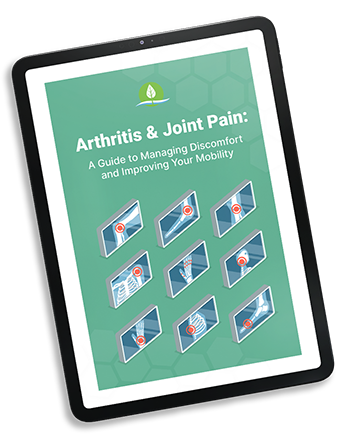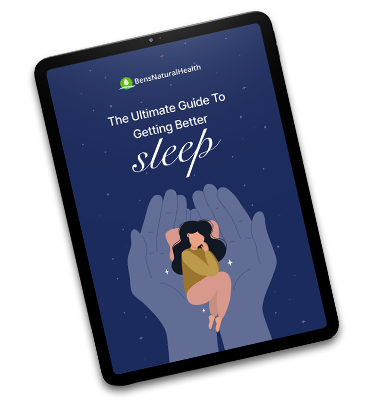Estrogen is a hormone that plays a crucial role in sexual and reproductive development.
Although present across all age groups, individuals who are of reproductive age and female typically exhibit elevated levels of this hormone.
As menopause sets in, estrogen levels suffer a decline, often giving rise to symptoms like hot flashes and night sweats.
As a s result, around 80% of women experience symptoms when going through menopause, a change that usually sets in during their forties and fifties.
These symptoms (such as night sweats and hot flashes) are unpleasant and lead many women to seek out hormonal replacement therapy, which can include estradiol.
In this article, we’ll explain what estradiol is, why it’s used, some of its potential benefits and side effects, as well as foods to eat and avoid while taking it.
We will
Medications that contains Estradiol
Estradiol is a medication used to help treat symptoms of menopause or ovary removal in women. There are different forms of the hormone estrogen (one of the primary sex hormones in women along with progesterone), but estradiol is considered the “most potent” in the human body.
Estradiol is prescribed in many forms and can include the names:
- Estrace
- Vivelle-Dot
- Delestrogen
- DepoEstradiol
- Divigel
- Elestrin
- Alora
- Estrace Cream
- Estraderm Transdermal
- Estradiol topical
- Estradot
- Estrasorb
- Estrogel
- Evamist
- Femtrace
- Menostar
- Minivelle
- Vivelle
- Climara
As you might have gathered from this list, estradiol is available in different forms, including oral pills, transdermal patches, injections, and creams.
The creams are applied vaginally, while the transdermal patches are applied to your skin, usually somewhere on your lower stomach area.
Dosages will vary depending on the method of application. For instance, estradiol injections like Depo-estradiol are administered every 3-4 weeks, whereas oral forms of estradiol are administered daily for a specified period (it can be weeks or even years).
Get Your FREE Arthritis Guide
- Learn how to naturally improve your arthritis symptoms
- Dietary recommendations, exercise guides, supplements, and lifestyle changes
- Developed exclusively by our medical doctor
Foods to avoid while taking estradiol
There aren’t many foods that are contraindicated while taking estradiol. You might have heard about some foods that help block estrogen, but in the case of taking estradiol, you wouldn’t necessarily want to do that because you want to increase estrogen levels by taking estradiol.
The main concerns regarding your diet when taking estradiol tend to be:
- Trying to offset menopause-related weight gain (your metabolism slows when estrogen levels drop, which can lead to weight gain and increased fat storage)
- Minimizing any side effects from estradiol, such as fluid retention
Grapefruit juice
Taking estradiol with grapefruit juice can increase the amount of estradiol in your system, so it’s recommended to avoid grapefruit and grapefruit juice while you’re taking estradiol.
Added sugar
When your estrogen levels decrease, it can lead to weight gain as your metabolism slows. You can do your part to help offset hormonal-related weight gain by adopting a healthy diet, which includes reducing your added sugar intake.
Added sugar is the most prevalent in sweetened foods and drinks like sweets and soda, but it is also added to many processed foods.
Some examples of common sources of added sugar include:
- Flavored yogurts
- Sweetened cereals
- Nutrition bars
- Condiments
- Soups
Check the nutrition facts label to see how much added sugar is in the foods and drinks you normally consume.
It’s recommended to keep your intake of added sugars below 10% of your total calories, which would mean fewer than 48 grams per day for a 2,000-calorie diet.
Some health authorities recommend even less, such as the American Heart Association’s recommendation of consuming fewer than 24-36 grams per day for women and men respectively.
High-fat foods (saturated fat)
A reduction in estrogen (the reason estradiol is prescribed) can cause changes to your body’s cholesterol metabolism and can promote the buildup of fatty plaque in your arteries.
This change might increase your risk of developing heart disease, the number one killer of women in the United States.
To help offset potential changes in your cholesterol metabolism, it can be helpful to be mindful of your saturated fat intake.
Saturated fat is primarily found in animal products like meat, butter, cheese, and certain oils (such as coconut oil and palm oil). and can contribute to higher levels of LDL “bad” cholesterol. Eating a diet that’s rich in saturated fats and excessive calories can contribute to obesity. This excessive body fat can disrupt hormone balance, leading to increased levels of estrogen. This effect is especially noteworthy for postmenopausal women, as their ovaries produce less estrogen, but the adipose tissue remains capable of producing and storing estrogen, potentially resulting in higher circulating estrogen levels.
That doesn’t mean you should avoid saturated fat altogether – just aim to keep your intake moderate and focus on more heart-healthy fats instead (we’ll get to that in the next section on what to eat!).
Some foods high in saturated fat:
- Beef (especially non-lean cuts)
- Lamb
- Pork
- Poultry with the skin on
- Lard
- Cream, cream cheese, etc.
- Butter
- Cheese
- Ice cream
- Coconut (including coconut oil)
- Palm oil and palm kernel oil
- Some baked and fried foods
High-sodium foods
Estradiol can cause bloating and fluid retention. If you eat high-sodium foods, it can cause your body to hold on to more fluids and worsen fluid retention.
Sodium is prevalent in processed foods because it’s an inexpensive way to add flavor to foods and prolong shelf life.
Some of the highest-sodium foods include:
- Bread and rolls, including quick bread mixes (like pancake mixes)
- Pizza
- Sandwiches
- Cold cuts and cured meats
- Soups
- Burritos and tacos
- Savory snacks (pretzels, jerky, chips, etc.)
- Cheese
- Fast food and restaurant food
- Canned soups
- Certain condiments (soy sauce, salad dressings, etc.)
Get Your FREE Sleep Guide
- Learn how to naturally improve your sleep
- Dietary recommendations, supplements, and lifestyle changes
- Developed exclusively by our medical doctor
Foods to eat when taking estradiol
Now you know what foods to avoid while taking estradiol, below are some healthy alternatives to eat instead.
Healthy fats
In the previous section, we mentioned how diets high in saturated fat can contribute to high cholesterol levels – so what types of fats are considered heart-healthy?
Most unsaturated (heart-healthy) fats come from plant-based sources, but there are a few exceptions!
Here are some great sources of healthy fats to eat while taking estradiol:
Lean protein
Diets rich in protein are associated with weight loss and weight management, which can be helpful if you’re experiencing menopause-related weight gain.
Lean protein is lower in fat and calories, which can further help thwart hormonal-related weight gain.
Some sources of lean protein to eat while taking estradiol include:
- Skinless poultry
- Lean cuts of red meat
- White fleshed fish (tilapia, cod, etc.)
- Low-fat dairy products
- Eggs
- Soy (edamame, tofu, etc.)
Foods rich in phytoestrogens
Phytoestrogens are compounds in plant foods that are similar in structure to estrogen and, therefore, might mimic some of its effects.
While eating foods rich in phytoestrogens can be controversial in some instances (such as in certain types of breast cancer or for people at risk of breast cancer who are premenopausal), they are likely safe to consume in menopause when estrogen levels are lower.
In addition, phytoestrogens are associated with an improvement in vasomotor symptoms associated with menopause, such as night sweats and hot flashes.
A study linked phytoestrogens with an improvement in cardiovascular risk and bone density, which is one of the potential benefits of taking estradiol!
Some foods rich in phytoestrogens include:
- Soybeans (including tofu, tempeh, and soy milk)
- Flax seed
- Sesame seeds
- Wheat
- Berries
- Oats
- Barley
- Dried beans
- Lentils
- Rice
- Alfalfa
- Mung beans
- Apples
- Carrots
- Wheat germ
- Ricebran
Who might take estradiol?
There are several reasons you might be prescribed estradiol. Here are some of the most common reasons.
Treating symptoms of menopause
Menopause is when the monthly cycles in women start to dissipate, which usually occurs between the ages of 45 and 55. The menopausal process can take years and depends on your genetics, ethnicity, and other factors.
When you go through menopause, your body produces less estrogen as the rate of ovulating (releasing an egg which can result in pregnancy) slows and eventually stops.
In addition, the type of estrogen your body produces changes during menopause, going from estradiol (which is primarily produced in your ovaries) to estrone, which is primarily produced in body fat.
Estradiol is prescribed to help offset the unpleasant symptoms of low estrogen from menopause, such as hot flashes and vaginal dryness.
In addition, estradiol might help protect you against natural changes in cholesterol metabolism that can occur with menopause, which might help reduce the amount of plaque that forms in your arteries.
What are the side effects of estradiol?
When it comes to medications (especially those that contain or mimic hormones), several potential side effects can occur.
Some of the most common side effects of estradiol include:
- Breast tenderness
- Headache
- Nausea
- Non-menstrual vaginal bleeding
- Pelvic pain
- White or brown vaginal discharge
- Bloating
- Swelling
- Leg cramps
- Indigestion
Helping to prevent bone loss (osteoporosis)
The natural drop in estrogen levels during menopause can promote bone loss, which can lead to osteoporosis.
It’s estimated that women lose up to 10% of their bone mass within the first few years after menopause.
Taking estradiol might help slow this process by promoting more bone formation than bone resorption (breaking down bone).
Fertility treatments
If you’re undergoing in-vitro fertilization (IVF) to become pregnant, you might be prescribed estradiol to help thicken the lining of your uterus, which can help with the implantation of a fertilized egg. It also helps boost blood flow to the uterus and helps the placenta to function correctly.
Ovary removal
If you undergo a hysterectomy with ovary removal (especially prior to menopause), you might be prescribed estradiol to help provide the estrogen that your ovaries would have made on their own until you hit menopause.
Taking estradiol can help reduce the risk of developing early osteoporosis and other potential health issues that can stem from low estrogen.
Conclusion
Estradiol is a hormonal replacement drug most commonly prescribed to treat symptoms of menopause.
While taking estradiol, you may want to limit your intake of saturated fat and high-sodium foods (to offset natural changes in cholesterol metabolism and hormonal fluid changes), as well as avoid grapefruit.
Foods to eat while taking estradiol can include healthy unsaturated fats, lean protein, and foods rich in phytoestrogens.
Explore More








